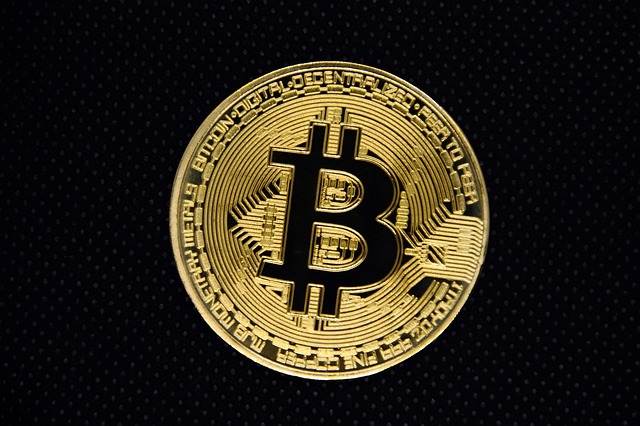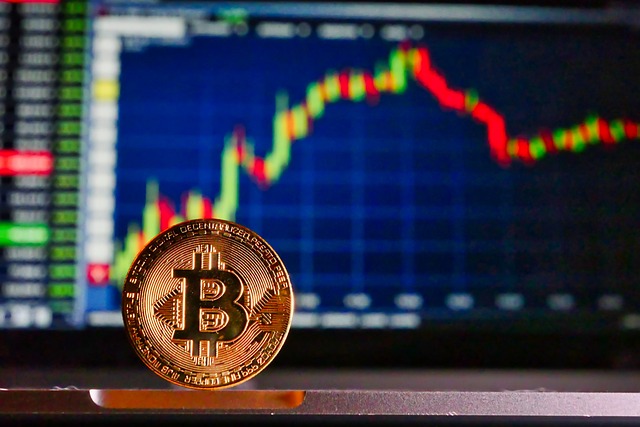In volatile cryptocurrency markets, especially during bear phases, securing digital wallets is crucial. Bear markets impact investor sentiment and make them more vulnerable to cyber threats. To protect assets, investors should implement strong security measures like two-factor authentication (2FA), use cold storage for long-term holdings, keep software updated, and practice good password hygiene. Diversifying wallet types and staying informed about market dynamics enhances security during these uncertain periods, ensuring digital asset safety amidst price volatility.
In the volatile world of cryptocurrency, securing your digital assets is paramount, especially during bear markets where market sentiment can cause significant ups and downs. This article guides you through the best practices for safeguarding your crypto wallets, focusing on understanding bear markets’ impact and leveraging security measures to protect against threats. Learn how to navigate uncertainties with advanced tips tailored to enhance wallet security in these challenging times.
- Understanding Bear Markets: Their Impact on Cryptocurrency Wallets
- The Role of Security Measures in Safeguarding Digital Assets
- Best Practices for Securing Your Crypto Wallet During Uncertain Times
- Common Threats and Vulnerabilities to Look Out For
- Advanced Tips for Enhancing Wallet Security in the Face of Market Volatility
Understanding Bear Markets: Their Impact on Cryptocurrency Wallets

Bear markets in cryptocurrency, characterized by falling prices and a general downturn in market sentiment, can significantly impact the security of digital wallets. During these periods, investors often face heightened concerns about their holdings. The volatility of the market can lead to panic selling, causing some users to make impulsive decisions regarding their crypto assets. This emotional response might result in leaving funds unsecured or transferring them to less secure wallets for quick access, thereby exposing them to potential risks.
Understanding the cryptocurrency market sentiment during bear markets is crucial. It’s a time when security measures become even more vital. Users should focus on reinforcing wallet security protocols, such as enabling two-factor authentication and using cold storage solutions for long-term holdings. By staying informed about market dynamics, investors can navigate these challenging periods with enhanced security practices, ensuring their digital assets remain safe amidst the volatility.
The Role of Security Measures in Safeguarding Digital Assets

In the volatile cryptocurrency market, where sentiments can drastically shift during bear markets, ensuring the security of your digital assets is paramount. Security measures play a crucial role in safeguarding your holdings from potential threats like hacking, theft, and fraud. The first line of defense involves utilizing robust wallets that offer advanced encryption protocols and secure multi-signature transactions, ensuring only authorized access to your funds.
Additionally, practicing good security hygiene is essential. This includes enabling two-factor authentication (2FA), using unique and complex passwords, regularly updating software to patch vulnerabilities, and being cautious of phishing attempts. Backups are another critical component; storing recovery phrases securely offline can help reclaim assets in the event of loss or compromise of a digital wallet.
Best Practices for Securing Your Crypto Wallet During Uncertain Times

During uncertain times, like a cryptocurrency market downturn or bear market, it’s crucial to double down on wallet security practices. With heightened volatility, malicious actors often target wallets with weak security measures due to the potential for significant gains from stolen funds. To protect your crypto assets in such periods, consider implementing multi-factor authentication (MFA) for an extra layer of defense against unauthorized access. Keep your software updated to patch known vulnerabilities, and use secure, unique passwords for each wallet to minimize damage if one is compromised.
Moreover, diversifying your wallets can enhance security without compromising accessibility. For instance, use hardware wallets for long-term storage and hot wallets for frequent transactions. Regularly monitor transaction activity and enable alert systems to catch suspicious behavior promptly. Back up your private keys in multiple, secure locations to ensure you can regain access even if one backup is compromised by a cyberattack or natural disaster.
Common Threats and Vulnerabilities to Look Out For

In the dynamic landscape of the cryptocurrency market, understanding common threats and vulnerabilities is crucial for maintaining secure digital wallets. One of the primary concerns during bear markets is the increased risk of phishing attacks. As market sentiment shifts negatively, cybercriminals often exploit investor fears and uncertainties through deceptive strategies. They may create fake websites or send spoofed emails mimicking legitimate exchanges to trick users into revealing their private keys or login credentials.
Another vulnerability lies in the human element. Weak passwords, over-sharing personal information, and a lack of awareness about security protocols can expose wallets to potential risks. It’s essential to practice robust security habits, such as enabling two-factor authentication (2FA), regularly updating software, and keeping antivirus programs up to date. Staying vigilant during volatile market periods is key to safeguarding your digital assets from malicious activities.
Advanced Tips for Enhancing Wallet Security in the Face of Market Volatility

During periods of market volatility, including bear markets where cryptocurrency prices can experience significant drops, it’s crucial to double down on wallet security measures. While fear and uncertainty may lead some investors to freeze their assets, this is actually a strategic time to reassess and strengthen your defensive positions. One advanced tip involves enabling two-factor authentication (2FA) for all your wallets. This adds an extra layer of protection beyond passwords, making it significantly harder for hackers to gain access, even if they obtain sensitive information.
Moreover, diversifying your portfolio across multiple wallets—both hardware and software—can further mitigate risk. Don’t keep all your eggs in one basket; spreading your assets reduces the impact of a potential breach or loss in any single wallet. Regularly monitoring market sentiment and staying informed about emerging security protocols is also key. Keep yourself updated on best practices, such as using secure, encrypted connections and regularly updating your software to patch vulnerabilities, ensuring your digital assets remain safe amidst the ups and downs of the cryptocurrency market sentiment during bear markets.
In navigating the volatile cryptocurrency market, understanding the impact of bear markets and adopting robust security practices are essential. By implementing best practices outlined in this article, such as enabling two-factor authentication, using hardware wallets for enhanced offline security, and staying vigilant against phishing attempts, individuals can better protect their digital assets during uncertain times. Awareness of common threats and advanced tips like keeping software updated and employing secure backup strategies further fortify wallet security. Remember that in the dynamic world of cryptocurrency, prioritizing security is key to preserving your investment’s resilience against market sentiment shifts.
